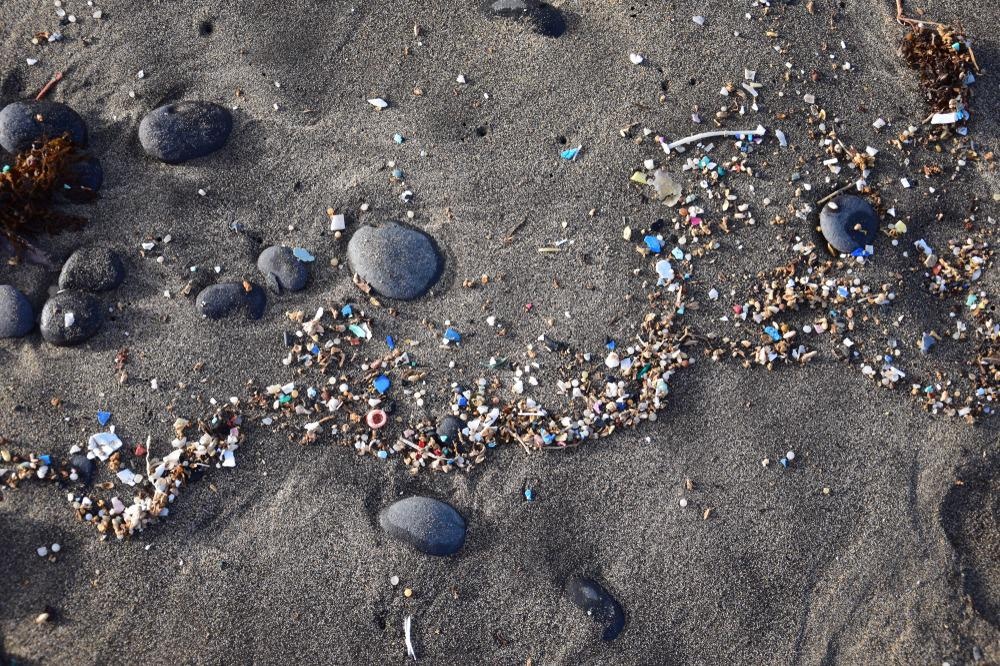Plastic never fully degrades; the ocean is becoming full of tiny plastic particles, known as microplastics, that are small enough to enter the bodies of marine life as well as our own. Twenty-year-old Fionn Ferreira, a chemistry student at Groningen University, the Netherlands, has developed a method of removing microplastics from water via the use of magnets and oil. To commemorate Pollution Prevention Week 2021, AZoCleantech takes a closer look at Ferreira's novel technology.

Image Credit: SannePhoto/Shutterstock.com
The Global Problem of Microplastic Pollution in Oceans and Rivers
Plastic recycling is on the rise, but current rates are nowhere near enough to mitigate the negative impacts of plastic pollution.
Plastic production continues to increase despite efforts to shift towards environmentally friendly, sustainable materials.
Data shows that over half of all plastics ever made were produced in the last 13 years and that recycling rates remain dismally low at just 9%. As a result, vast amounts of plastic are being introduced into the environment every year.
Plastic is the most common form of litter that enters the world’s oceans, with around 4.8–12.7 million metric tons of plastic entering the oceans annually.
To date, it is estimated that more than 268,000 tons of plastic pollute the oceans.
The consequences of this severe pollution problem are concerning.
The amount of plastic particles thought to be floating in the ocean right now is 5.25 trillion. Microplastics cause harm to the fertility, growth, and survival of animals in the marine ecosystem.
Additionally, research has linked human exposure to microplastics with various health issues such as cancer, heart disease, and poor fetal development.
Humans become exposed to microplastics via various routes, with the consumption of seafood being one of them.
Therefore, cleansing the ocean of microplastic pollution is vital to the health of marine life and humans.
Magnets Offer a Chance to Clean up Microplastics from our Water Sources
On a trip to his local beach, 20-year-old Fionn Ferreira, a chemistry student at Groningen University, the Netherlands, noticed an oil spill residue that had plastic attached to it. He hypothesized that oil could be used to selectively draw out plastic from the water.
To test his theory, Ferreira mixed iron oxide with vegetable oil to create a ferrofluid into which he then added microplastics sourced from everyday items such as car tires, plastic bottles, and washing machine water.
He observed that the microplastics were attracted to the ferrofluid, and once they had attached themselves he was able to remove the plastic with a magnet.
His experiment demonstrated the selective removal of microplastics from water using a cheap, simple, and scalable method.
Following success with the first trial, Ferreira ran 5,000 more tests which were proven to be 87% effective at removing microplastics from water.
Microplastic Removal - Proof of Concept
Video Credit: Fionn Ferreira/YouTube.com
Now, Ferreira is in the process of developing a platform that would leverage this magnetic extraction method to remove microplastics from flowing water.
He aims to create a device that could fit into waterpipes to remove plastic particles in a continual fashion, preventing more plastic from entering the ocean as well as extracting existing microplastics.
Thus, this prevents people and the environment from exposure to microplastics.
Why is it Important to Act Now?
It is vital that efforts are made to develop this solution now because the problem of plastic pollution is set to worsen. By 2030 it is predicted that plastic production will have further increased by 60%, and by 2050 it is expected to have tripled.
Worryingly, by this time it is predicted that there may be more plastic in the ocean than fish. With plastic production showing signs of continuing to ramp up, a solution to reduce plastic pollution is urgently needed, particularly because of the serious effects it has on environmental and human health.
What Does the Future Look Like for Microplastic Removal?
Recently, the Footprint Coalition, a foundation established by Robert Downey Jr, invested in Ferreira’s project.
The funding will see him start research with aims to scale up his technology so that it can be used in wastewater treatment facilities. This will likely be the first of many developments for his technology, which could be fundamental to preventing microplastic pollution as well as cleaning the oceans of trillions of plastic particles.
It is likely that Ferreira’s solution will work alongside other technologies that are currently being developed to remove microplastics from water.
The solution to microplastic pollution will likely be a multi-pronged approach, with various technologies being adopted to tackle sources of plastic pollution from all angles.
Currently, there are other technologies available that can prevent plastic from entering the oceans from canals and rivers.
Bubble Barrier, for example, can trap larger pieces of plastic as well as microplastics as small as 1 mm. However, there is no current technology that can effectively remove microplastics in natural waterways.
In the coming years, we will likely see further developments of Ferreira’s technology alongside other approaches, as teams around the world work together to solve the increasingly urgent plastic pollution issue.
References and Further Reading
Alfaro-Núñez, A., Astorga, D., Cáceres-Farías, L., Bastidas, L., Soto Villegas, C., Macay, K. and Christensen, J., (2021). Microplastic pollution in seawater and marine organisms across the Tropical Eastern Pacific and Galápagos. Scientific Reports, 11(1). https://www.nature.com/articles/s41598-021-85939-3
Horton, A. and Barnes, D., (2020). Microplastic pollution in a rapidly changing world: Implications for remote and vulnerable marine ecosystems. Science of The Total Environment, 738, p.140349. https://www.sciencedirect.com/science/article/pii/S0048969720338717
Gerretsen, I. (2021). How to fight microplastic pollution with magnets. BBC. Available at: https://www.bbc.com/future/article/20210825-how-to-fight-microplastic-pollution-with-magnets?utm_source=operamini
Carrington, D. (2020). Microplastic pollution in oceans vastly underestimated – study. The Guardian. Available at: https://www.theguardian.com/environment/2020/may/22/microplastic-pollution-in-oceans-vastly-underestimated-stud
Disclaimer: The views expressed here are those of the author expressed in their private capacity and do not necessarily represent the views of AZoM.com Limited T/A AZoNetwork the owner and operator of this website. This disclaimer forms part of the Terms and conditions of use of this website.